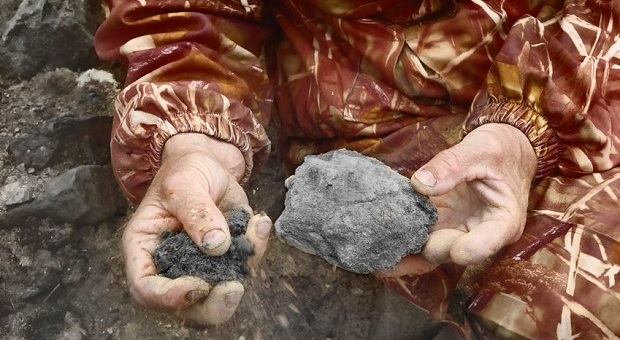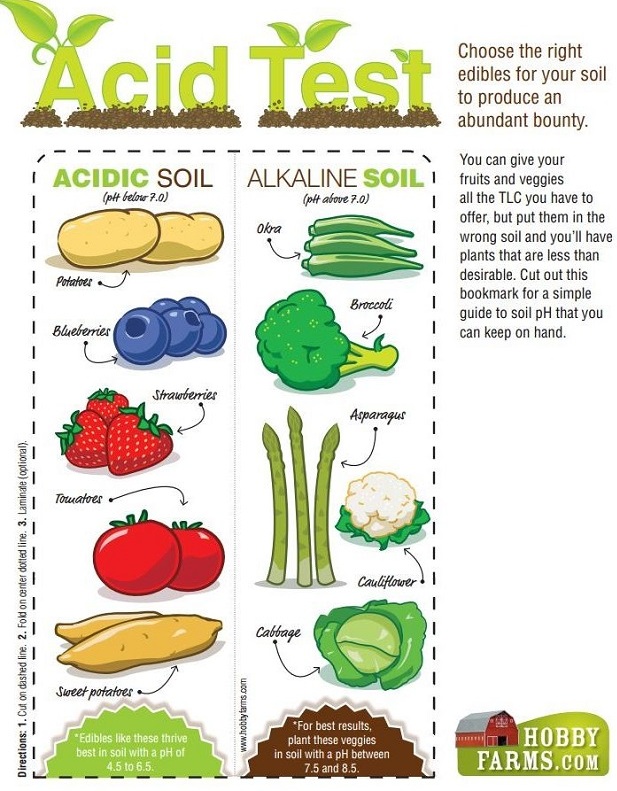Have you been trying to grow tomatoes but just can’t seem to get them to thrive? Maybe your cantaloupes just won’t grow.
If you live in a place that gets plenty of sunshine and water, chances are good that your problem is your soil. Fortunately, that’s an easy fix.
Today we’re going to teach you 4 ways to test your soil so that you can get your plants to grow as well as your weeds!
Use a Commercial Soil pH Test Probe
This method is the most expensive but it’s accurate and will tell you exactly what the pH of your soil is so that you can add what you need in order to get your soil up to par. You can pick one up for around $40-$50.
To test your soil pH, simply dig a 2-4 inch hole in your soil and fill it with distilled water. Then stick the probe in, wait 60 seconds and you’ll have your reading. Make sure that your probe is calibrated so that you get an accurate reading and be sure to use distilled water so that you’re not disrupting the pH of the soil with impurities in the water.
Use a Soil pH Test Kit
These are widely available at nurseries and garden centers and are easy to use. They’re also cheap – less than $10 in many places and you get several tests. All that you need to do is mix a small amount of soil with some distilled water in a tube then add the solution and shake. The solution may be in powder or liquid form; both work equally well. The solution will react with the soil and turn the water a certain color. Compare the color with the chart that’s included to get your pH.
Test Your Soil pH with Red Cabbage
This test is easy and doesn’t require anything other than cabbage but you won’t get an exact pH.
Finely chop red cabbage or chop it in your food processor until you have 1 cup chopped cabbage. Bring 2 cups of distilled water to a boil and add your cabbage. Simmer for 10 minutes, then allow the solution to cool. Strain the cabbage from the juice, keeping the juice. It will be violet or blue.
Now, add 2 teaspoons of soil to a glass jar and then add a couple of inches of water. Stir it well and let it sit for 30 minutes. If it turns pink, your soil is acidic. The brighter pink it is, the more acidic your soil is. If the juice turns green or blue, your soil is alkaline. The brighter green or blue, the more alkaline it is.
Test Your Soil pH Using Vinegar and Baking Soda
This test is extremely simple to do but, as with the cabbage test, won’t give you an exact pH. Still, you’ll get a good idea depending on the violence of the reaction.
Start the test by putting a couple of teaspoons of your soil onto 2 different plates. Add a couple of teaspoons of vinegar to one plate. If it fizzes, your soil is alkaline and you don’t need to proceed to the next step. The more fizz you get, the more alkaline it is.
If your soil doesn’t fizz, add a couple of tablespoons of distilled water to your other plate. You want the soil pretty muddy. Add a teaspoon of baking soda to the mix and stir. If it fizzes, your soil is acidic. The more fizz, the more acidic.
If you get no reaction at all, your soil is neutral.
Acidic, Alkaline, or Neutral?
Now that you know how to test your soil, let’s talk for a minute about what pH levels are and what plants do best in which type of soil. The pH level of your soil indicates how acidic or alkaline your soil is. Technically, pH indicates the number of hydrogen ions in your soil. This is important because the pH of your soil effects how your plants can absorb nutrients. Here is the breakdown:
- Soil with a pH of 7 is neutral.
- Soil with a pH over 7 is alkaline.
- Soil with a pH under 7 is acidic.
Now, what does that mean for your plants? Most plants will do fairly well in neutral soil but some will do even better in acidic (4.0-6.5 pH) or slightly alkaline (7-8 pH) soil.
Most fruits and some vegetables do well in acidic soil. A good pH for most is between 5.5 and 6.5 though some fruits, such as blueberries, like even more acidic (4.0) soil. To make your soil more acidic, mix in a bit of sulfur or some composted pine needles, wood chips, leaves or peat moss. If you use sulfur, it needs to be thoroughly mixed into your soil before you add the plants because it will burn them if they come into contact with pure sulfur.
Here is a list of some veggies and herbs that do well in acidic soil:
- blueberries
- beans
- broccoli
- beets
- bok choy
- garlic
- leafy greens including lettuce, kale and spinach
- parsley
- peas
- potatoes
- onions
Other plants do well in SLIGHTLY alkaline soil. To make your soil more alkaline, add lime or wood ash to your dirt. This adds magnesium to your soil. Some of the plants that grow well in alkaline soil include:
- artichoke
- asparagus
- Brussels sprouts
- cabbage and Chinese cabbage
- cantaloupe
- grape vines
- leeks
- Lima beans
- mustard and other leafy greens
- orange trees
- peach trees
- spinach
- sugar beets
- Swiss chard
- Turnips
The pH levels of your soil are critical to growing healthy plants that thrive and produce hearty fruits. Other conditions, namely nutrient content, also play a huge role because some minerals interact with others (calcium and phosphorus, just to name one pair) in such a way that the nutrient becomes less bioavailable to the plant even though it’s present in the soil. Sodium content also affects nutrient absorption.
Checking your pH is a great place to start but if you correct pH levels and still have problems, you may just have too much of one mineral, namely sodium, calcium or phosphorus, in your soil. There are test kits for this imbalance too, but that’s an article for another day!
If you have any great ways to test your soil for acidity or alkalinity, please share them with us in the comments section below!
This article has been written by Theresa Crouse for Survivopedia.
[yasr_visitor_votes]






































































If you have established beds (like asparagus and strawberries) what is the best way to tweak the ph in the soil, in each direction? Thanks for a helpful article.
Amazing issues here. I’m very happy to see your article.
Thanks a lot and I’m taking a look forward to touch you.
Will you kindly drop me a e-mail?
Hey! Do you know if they make any plugins to safeguard against hackers?
I’m kinda paranoid about losing everything I’ve worked hard on. Any recommendations?
i like your feed, such a great topic you have shared
good luck